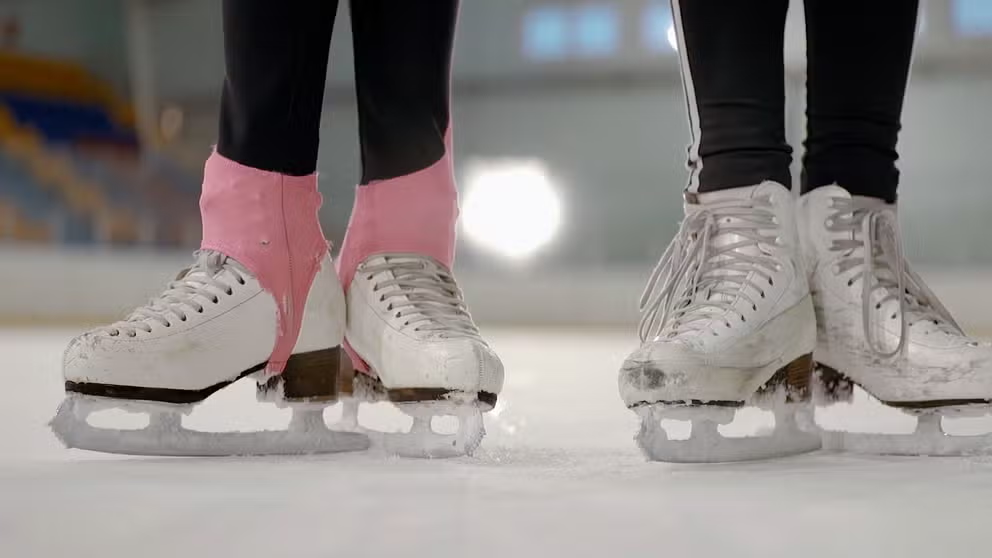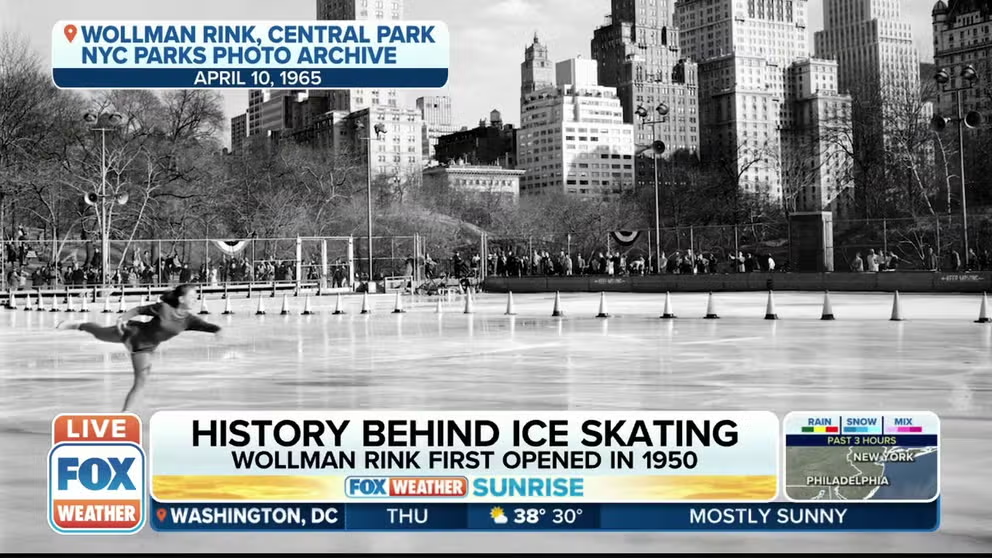From bones to blades: The evolution of ice skating
About 4,000 years ago, ice skating involved sliding across lakes on animal bones. The technological innovations that followed drastically transformed the skates and the sport.
How ice skating has evolved over 4,000 years
Originating 4,000 years ago in Scandinavia, ice skating has evolved drastically from a mode of transport to the sport and recreational activity of modern times.
For some, it’s a classic winter pastime. For others, it’s an athletic showcase on the world stage.
Ice skating scratches an itch for speed and agility, as it does for art and nostalgia, and its own story begins thousands of years ago.
Long before the glitz of pristine ice rinks and raucous Olympic stardom, ice skating quietly began as a necessity — with a lasting legacy first cut out of ice and bone.
Lakes and long strides
"Based on archeological evidence, we know that ice skating started about 4,000 years ago," said Federico Formenti, associate professor in physiology at King's College London and a visiting fellow at the University of Oxford.
"We identified Scandinavia — in particular, an area in Finland — as the most likely area where ice skating initially started; and indeed, some of the oldest specimens that have been found so far come from that area in Scandinavia."
This arctic area stood out to Formenti and his team because of a certain geographic feature — its lakes.

In modern-day Finland, a skiddoo crosses a frozen Lake Kilpisjarvi.
(Andia / Universal Images Group / Getty Images)
By using satellite imagery, they deduced that a unique combination of the lakes’ long and thin shape and orientation with one another inspired a unique way to cross them, particularly when they turned into ice.
"I think ice skating developed to facilitate transport at the beginning," Formenti said. "It wasn't something that we think was developed for fun — it was literally a means of transport."
"Essentially, it was the equivalent of today's bicycle."
Racing daylight
Transport and travel across the lakes was important year-round, but the cold, winter season for an area so close to the North Pole brought with it special considerations.
Winter in Scandinavia means exceptionally short days. According to Finland’s Ministry of Foreign Affairs, in the middle of the winter season, some parts of country may only see up to 6 hours of daylight.

The sun sets behind snowy spruce trees in Kuusamo, Finland. In the middle of winter, the northernmost parts of Finland can go for days or weeks without seeing sunlight.
(David Tipling / Education Images / Universal Images Group / Getty Images)
For early Scandinavians in a pre-electric age, such little daylight made a significant difference.
"If we want to travel a few kilometers even in a day, we have to do that in a very limited period of time," Formenti said. "And as a consequence, we need to think of ways to reach or cover those distances as efficiently as possible."
According to Formenti, instead of wasting time and energy by trudging through deep snow around their many lakes, early Scandinavians opted to travel across them by gliding on ice.
Bad to the bone
Gliding on ice required innovations in footwear.
"The look of the earliest skates is one of the most fun aspects of this story," Formenti said.
"The first ice skates were actually animal bones," he added. "Depending on the type of farm animals that would live nearby, people may have used the horse or cattle bones."
According to Formenti, the bones selected were based on the size of a person’s feet. People with longer feet used longer bones, whereas people with shorter feet used shorter bones.
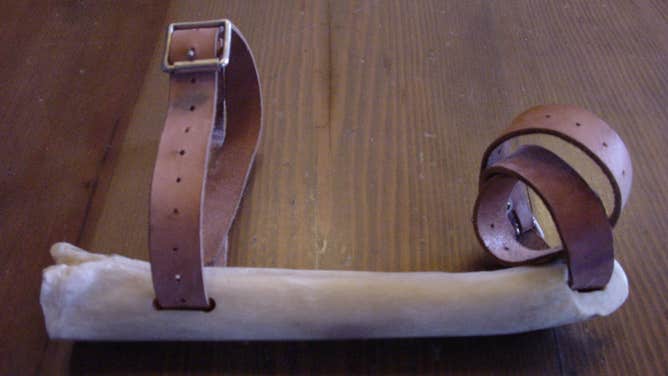
A replica of bone skates from 1800 B.C.
(Federico Formenti)
The bones were then made flat on one side to provide some stability for the ice skater’s ankles.
Keeping the bones on their feet involved additional engineering.
"What people did was to make holes into the bones," Formenti said. "Bindings at the time were simply leather straps or strings that would just go into the bone from one side to the other."
The strings were then wrapped up like shoelaces on top of their shoes, which were typically an animal skin cover on their feet, Formenti added.

The bones of early ice skates, along with the leather used in shoes and straps, came from cattle and horses.
(Joel Saget / AFP / Getty Images)
A skeletal slide
Bones were the prime material for ice skates, partly because the ancient Scandinavians had limited access to metalworks but also because of a certain characteristic of bones.
"They're relatively fat, so they've got a natural lubricant that helps reduce the friction between the skate and the ice," Formenti said.
As a consequence, this allows the bones to glide more efficiently on ice, as compared to wood or other materials available to the early Scandinavians.
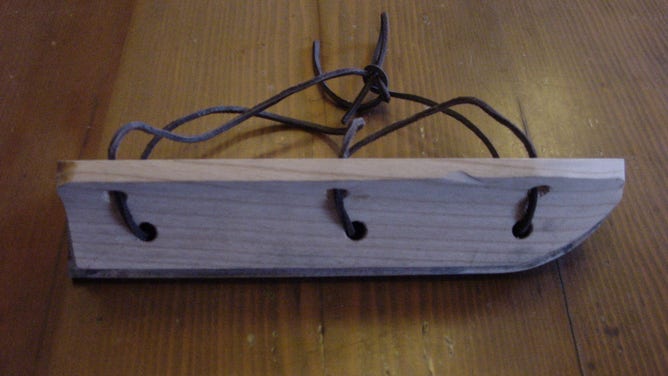
A replica of wooden skates with leather laces. Wooden skates did not slide as efficiently on ice as bone skates did.
(Federico Formenti)
One challenge that came with bone skates was how difficult it was to slide forward in them. So, the Scandinavians made an addition to help propel themselves.
"Individuals were using a stick more similar to what we'd be using with cross-country skiing, but one stick only — at least at the beginning — which was used to push on the ice, whether in between your legs or on the side," Formenti said.
"The skates would just provide an easy-gliding base for your transport," he added.
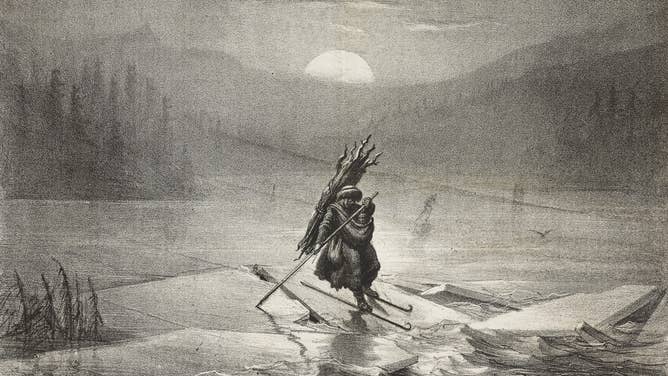
A skiier in 19th-century Scandinavia. The pole used for propulsion here is similar in concept to the sticks used with early bone skates.
(DEA / Biblioteca Ambrosiana / Getty Images)
Step change
Over the following millennia, the technology of ice skates evolved.
According to Formenti, the materials went from animal bone to a wooden board connected to a metal blade to a boot connected to a metal blade.
The dimensions of skates also changed, as the metal blades were longer and thinner than the bones initially used.
"The combination of these two changes allow less friction at each stride and covering a longer distance for each stride," Formenti said.
This also gave way for greater control of the blade, longer strides and, because of that, faster speeds.
These design innovations helped set the stage for the recreational and athletic potential of modern ice skating.
A growing bladed footprint
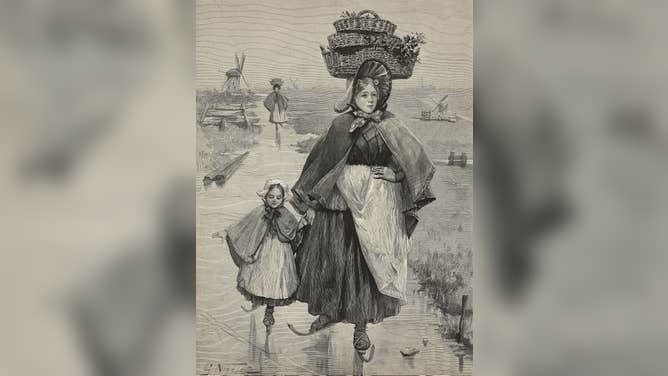
A woman and child skate to the market in the Netherlands.
( The Illustrated London News / DEA / ICAS94 / Getty Images)
Ice skating eventually spread outside of Scandinavia.
According to Encyclopedia Britannica, skating made its way to the Netherlands during the Middle Ages and then England by the 17th century.
During the 18th century, elites like Marie Antionette and Napoleon learned to skate, and members of the British military brought the activity to North America.
The same period also saw the beginnings of ice skating being treated as an official sport.
"The first organized skating club was the Edinburgh Skating Club in Scotland," said Larry LaBorde, figure skating coach and owner of the Ice Chalet in Knoxville, Tennessee.
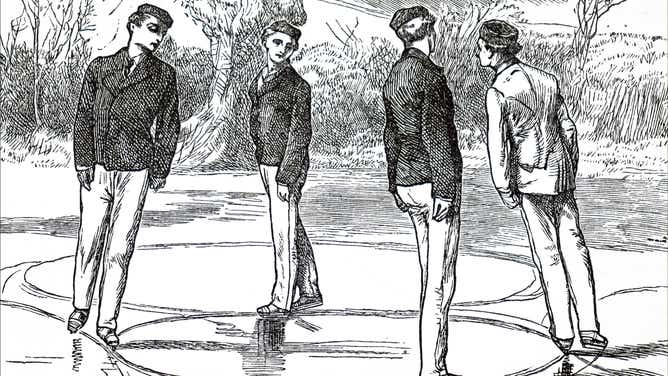
A 19th-century illustration shows four men showcasing control of their blades by drawing circles with their skates onto a frozen lake.
(Universal History Archive / Universal Images Group)
According to LaBorde, club candidates had to pass tests where they had to demonstrate their mastery of skating techniques. One of which was their ability to jump over hats — first just one, then a stack of two and then a stack of three.
They also had to demonstrate their control of their blades, and they did so by carving circles, flowers and other shapes into the ice as they skated, according to LaBorde.
"They called it ‘artistic skating’," said LaBorde. "Then, it became ‘figure skating.’"
From there, figure skating bloomed, inspiring the creation of ice shows and an Olympic sport in the decades that followed.
Leaving a mark
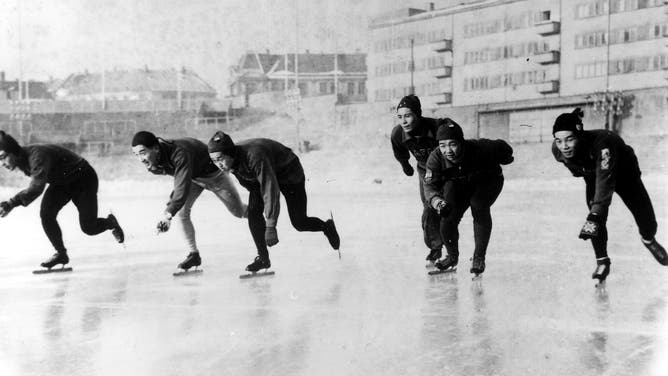
Japanese speed skaters train during the 1952 Winter Olympics in Oslo, Norway.
(Ullstein Bild / Getty Images)
Thousands of years of design changes catapulted ice skating far beyond its original purpose in ancient Scandinavia.
"It shows the genius of individuals who lived, obviously, very different daily life circumstances compared with ours today," Formenti said. "To me, it’s fascinating how humans adapted to different technologies that have become available over time."
Those adaptations also helped make ice skating grow in popularity, becoming a beloved winter pastime for many.
The history of Wollman Rink in New York City
FOX Weather multimedia journalist Katie Byrne is in New York City, providing a history of the Wollman Rink in Central Park that's been open since 1950.
"When you are on the ice, skating for the first time and that cool air hits you in the face, it's like driving a car and you roll the window down and you put your hand out the window," LaBorde said.
"It's a neat feeling to be able to skate and have that cool air hit you," he added.
That cool breeze is what LaBorde thinks wins people over.
